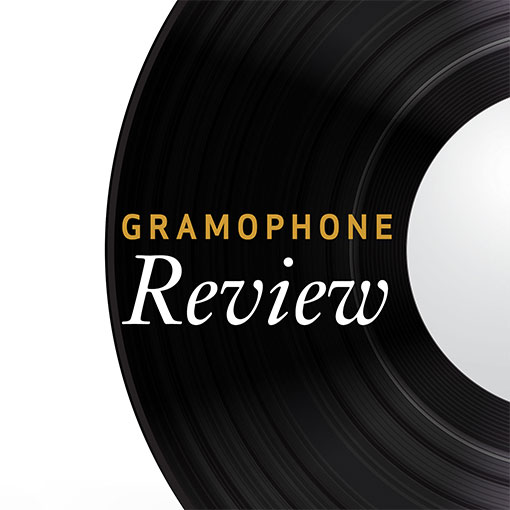François Couperin Harpsichord Works
View record and artist detailsRecord and Artist Details
Composer or Director: François Couperin
Label: Erato
Magazine Review Date: 3/1995
Media Format: CD or Download
Media Runtime: 178
Mastering:
DDD
Catalogue Number: 4509-96364-2

Tracks:
| Composition | Artist Credit |
|---|---|
| (L') Art de toucher le clavecin |
François Couperin, Composer
François Couperin, Composer Olivier Baumont, Harpsichord |
| Livres de clavecin, Book 2 |
François Couperin, Composer
Davitt Moroney, Harpsichord François Couperin, Composer Olivier Baumont, Harpsichord |
Composer or Director: François Couperin
Label: Harmonia Mundi
Magazine Review Date: 3/1995
Media Format: CD or Download
Media Runtime: 182
Mastering:
DDD
Catalogue Number: HMC90 1447/9

Tracks:
| Composition | Artist Credit |
|---|---|
| (L') Art de toucher le clavecin |
François Couperin, Composer
Christophe Rousset, Harpsichord François Couperin, Composer |
| Livres de clavecin, Book 2 |
François Couperin, Composer
Christophe Rousset, Harpsichord François Couperin, Composer William Christie, Harpsichord |
Author: Lionel Salter
In
Couperin's Second Book begins with an Ordre (No. 6) that apparently focuses on pastoral scenes. B's harvesters go about their work less gaily than R's but bring more variants to their refrain: however, in the following movement R shows a stiffer upper lip than the properly languishing B, and when it comes to twittering R is rather heavy-handed. His attempts to make his ''barricades'' more mysterious by playing them more irregularly do not altogether convince me; and B certainly captures the naive rusticities of ''Les bergeries'' better. Both artists present entertainingly chattery old gossips.
The greater part of Ordre No. 7 is concerned with a child prodigy (Mlle de Menetou) and with youth, though why Couperin concentrated almost throughout on the harpsichord's lower register, except when changing into the minor mode, remains puzzling. B's simplicity well suggests the subject's innocence, and in the ''Petits ages'' sequence his delicacy and variety of pace are appealing. ''La Basque'' is sprightly from both, but the slower damping in R's instrument produces some blurring of the outlines.
Its weightier sonority tilts the scales in R's favour for Ordre No. 8, with its noble ''La Raphaele'' and grandiose Passacaille; and he has a stronger rhythm in the Gavotte and Rondeau than B, who tends to disturb the flow by over-phrasing and sounds too pernickety in ''L'Ausoniene''. B makes an occasional discreet change of manual and, as elsewhere in his performance, in the Sarabande and the Passacaille (which he shifts to the end of the Ordre) adds stylish embellishment to reprises. His Courantes are delightfully neat.
The Allemande for two harpsichords that begins Ordre No. 9 poses problems all round. B's version is dreadfully stiff and choppy, with mechanically clipped inegalites: R's is better shaped but excessively noisy. Despite the marking mesure he is also too capricious, to my way of thinking, in ''Les Charmes'', and his imperiously Junoesque ''Olympie'' is offset by a too hefty ''Bavolet flottant'' (''hat ribbon''), where B is daintiness itself.
Ordre No. 10 is mainly devoted to Mars and Bacchus. R has the bigger guns for the battlefield scenes (with rousing fanfares), but his victors show surprisingly little allegresse. On the other hand, his topers sound more tipsy, and his bucking horse is a lot more frisky (B's sounds as if it had hiccups). After a few sketches of high life, Ordre No. 11 contains bitingly satiric vignettes of figures in the 1693 move to dragoon musicians into a guild of entertainers of lower social caste. Both the present harpsichordists evidently enjoy this (fortunately unsuccessful) attempt to impose a closed shop, and the results are great fun (R's final movement is the more boisterous).
In Ordre No. 12, largely given over to feminine portraits, B shines, bringing far more elegance and (presumably thinking of the subjects) fairly copious decoration. In comparison, R's ''L'Intime'' is positively hectoring, and his Atalanta could scarcely be termed tres legerement; but his spinning-girl is more cheerful, and his depiction of the Regent in his corybantic orgies is more vigorously earthy.
So, to sum up, there are pluses and minuses on both sides. For myself, I should be unwilling to put the splendid recording of this same set by Kenneth Gilbert (10/89) aside for either; but both these new issues are well worth hearing.'
Discover the world's largest classical music catalogue with Presto Music.

Gramophone Digital Club
- Digital Edition
- Digital Archive
- Reviews Database
- Full website access
From £8.75 / month
Subscribe
Gramophone Full Club
- Print Edition
- Digital Edition
- Digital Archive
- Reviews Database
- Full website access
From £11.00 / month
Subscribe
If you are a library, university or other organisation that would be interested in an institutional subscription to Gramophone please click here for further information.





